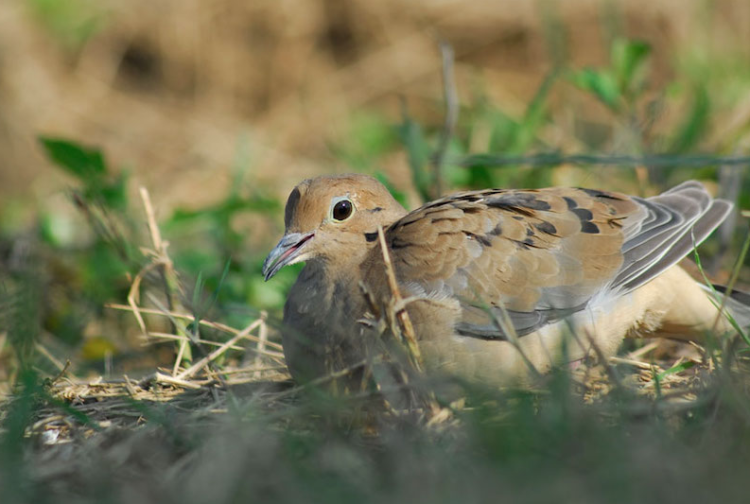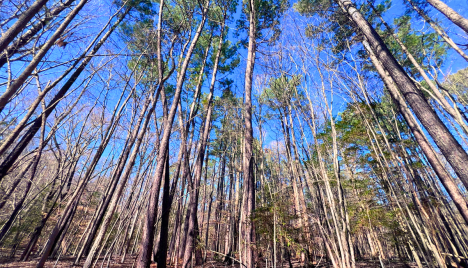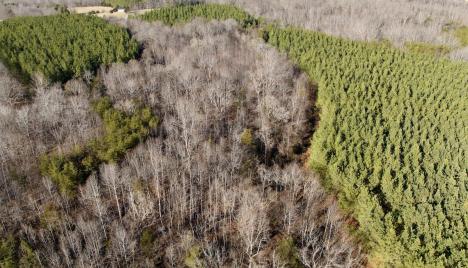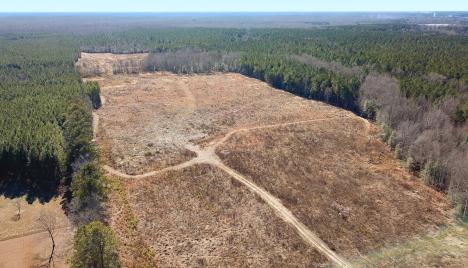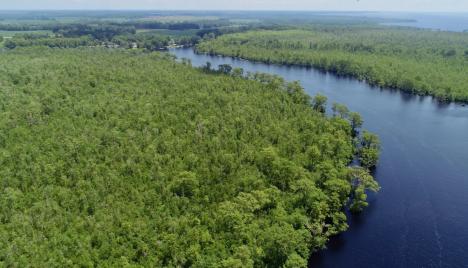Mourning doves are one of the most exciting and challenging of all game bird species to hunt. In many parts of the country, the dove season opener marks the beginning of the fall hunting season. Dove hunting is a family affair, a time for generations of hunters to gather in the grain fields and test themselves against the speed and aerial agility of passing birds. Unlike other native upland game birds like bobwhite quail and grouse, doves have enjoyed a marked increase in overall numbers, thanks in large part to their ecology and adaptability. Today doves are found around almost any open grain field across the country, and they are one of the most popular of all wild upland birds to hunt.
Part of the dove’s success as a species stems from the fact that these birds are perfectly adapted to thrive near large agricultural fields that have come to dominate much of rural America. Yet, some fields harbor more doves than others, and with a little effort and a basic understanding of mourning dove ecology, it is possible to turn a small patch of open ground into an outstanding, consistently-producing dove field.
Planting a dove field can also increase the value of leased ground, so landowners should consider dedicating a few acres to these birds to increase profits and attract hunters looking to lease a two-season property. Just as with any other species, proper management is the key to success.
Mourning Doves 101
Mourning doves are of the 300 species in the Columbidae family, which also includes pigeons. Like other members of this group, doves feed almost exclusively on seeds, and they are specifically adapted to feeding on grass seeds in open areas. As westward expansion turned forests into farmland, dove numbers increased because the habitat was ideally suited for their ecological needs. The birds thrive on crops like corn, millet, wheat, and sunflowers.
Mourning doves prefer food sources that are near roosting and nesting sites, which are most often dead or isolated trees. Water is also important to doves, and when roosting sites are located in proximity to both food and water, doves will usually be found in good numbers. Because they are most vulnerable while feeding on the ground, doves prefer open areas with little ground cover, and the birds can store seeds in their crop so that they can feed quickly and return to roost sites without spending too much time in the open.
Doves have a marked affinity for their favorite feeding sites, and for the hunter, this means that birds will appear again and again as long as they are not driven away by overhunting. An understanding of basic dove ecology is critical when planning a field, and providing the birds with plenty of forage near roosting sites and water is the first step toward managing a productive dove field.
Site Selection for Your Dove Field
Choosing the proper site for your dove field is critical. In addition, the field must be large enough to catch the attention of doves regularly. One acre is a minimum, but fields of this size won’t hold a large number of birds and you must be careful to limit the number of hunters and hunting days to prevent driving the birds off the field. Dove fields ranging from two to six acres are better, as they provide the birds with ample food and are large enough to accommodate more hunters. Several fields from two-to-six acres are even better.
As previously stated, mourning doves prefer open, disturbed ground with plenty of seed plants available. Seed-producing plants are usually first in succession in areas that have been disturbed by natural occurrences like fires or floods or by human mowing or cultivation. Doves are particularly sensitive to stubble and any other plant growth that impedes their ability to move along the ground. Your dove fields, therefore, should be as clean as possible and should offer plenty of open space so the birds feel comfortable while feeding.
Clean sight lines minimize the risk that predators like foxes, cats, and coyotes will prey on the birds as the doves come to feed. In areas of rolling terrain, the highest fields often produce the best results and can be seen better by passing birds. These fields will be even more attractive if there are roosting sites nearby. Mourning doves aren’t particularly choosy about their roost site so long as it provides them with a secure location to spend their non-feeding hours. Dead trees are often preferred, and some hunters choose to kill trees along the edge of their fields by girdling so that the birds will have an attractive roost that is close to the food source.
When choosing a dove field consider where you will set up your blind. Hunters can choose to sit on the edge of the field or inside un-mowed rows of crops, but it is important to take the location of the sun into account when establishing a blind. If you plan to hunt in the evenings, set up the blind so that any hunters are facing east with the sun at their backs, which makes it easier to see incoming birds and more difficult for the birds to see you. If you are setting up multiple blind sites in a single field be absolutely sure that all hunters understand where their shooting lanes are. Safety is always the primary concern.
Dove Field Site Preparation
The first step in planting a successful dove field is to eliminate weeds. This can be accomplished chemically, by cultivating or by burning, but be sure that the ground is flat and attractive to the birds. It’s always a good idea to test the soil when introducing any food plot, and dove field preparation is no different. Lime and fertilize the ground as needed and make sure there is sufficient drainage to prevent standing water.
Since doves are primarily seed eaters, it is important to choose a crop that will produce large amounts of seed. In addition, it is best to offer a variety of different seeds. Plants that seed at different times will keep the birds coming back and will prove more attractive to doves.
Sunflowers are a traditional choice for dove fields, and a well-managed sunflower field is likely to provide enough food for birds throughout the season. However, modern seed blends developed with birds in mind are attractive and palatable for mourning doves, and mixed fields oftentimes provide the best results. Mossy Oak BioLogic’s Whistleback, when planted at 10 pounds per quarter acre, provides large amounts of seeds that will sustain doves and other upland birds throughout the summer, fall, and winter. The company’s Guide’s Choice is another option, and although it is created with waterfowl in mind, Guide’s Choice will grow in dry conditions and will produce billions of seeds per acre.
Blind Spot is also a successful blend for dove hunters, and actually serves multiple purposes in a dove field. It produces abundant seeds as well as providing excellent cover around dove blinds. It grows to a mature height of five to eight feet (or taller) and will act as natural concealment along the edge of the hunting area or around a proposed blind location.
Planting and Hunting the Dove Field
After the field is treated for weeds, and fertilizer and lime are added, plant your dove fields in mid-to-late spring through early summer, depending upon your location north to south and the length of time needed for plants to mature. Ideally, dove field vegetation will be mature by early August, and at that time it is important to begin mowing the fields to provide open cover and drop seeds to the ground so that the doves can begin feeding. Because doves are sensitive to ground materials, some farmers choose to rake or windrow open lanes to ensure that doves have a secure place to land and will feel comfortable returning to the area to feed day after day.
Federal laws restrict hunting birds over dumped seed, but in most cases, mowed fields are legal and actually provide habitat and nutrients to a variety of wildlife. By the opening of dove season approximately one-half of the field should be mowed or disked, and cutting these shooting lanes parallel to the suspected flight path of the doves will bring birds into the shooters instead of across their face, making it easier to see incoming doves and offering a few extra seconds to prepare for the shot. Mowing around the perimeter of the field makes the doves feel more protected and limits cover for predators. Blinds can be set up along this open edge or within standing cover, and this is why blends like Blind Spot are very effective. They provide natural cover that is sufficient to conceal hunters and yet doesn’t alarm the birds.
Use Your Head: Dove Field Mistakes to Avoid
One of the biggest mistakes most hunters make when establishing a dove field is overhunting the field and driving birds away. The very best fields accommodate one hunter per acre, and even these fields won’t continue to produce if they are hunted every day, which is why so many hunters are disappointed when hunting public fields that are hunted daily. Instead, limit your hunting to one or two times a week and restrict the hunt to only a few hours, allowing birds to return to feed and flocks to build in numbers after the hunt has ended. A dove field is a resource, and any resource that is over-utilized won’t last.
Land managers must ensure that their hard work isn’t squandered by overhunting. Dove fields that are hunted only one or two days a week will provide more action because as long as the food lasts, the birds will keep coming back week after week throughout the season.
Some dove hunters prefer to have two or more fields located in close proximity, posting one or two hunters in each field for more shooting opportunities. The additional field can also serve as a sanctuary where birds can avoid hunters. Switching from one field to the next on different days oftentimes keeps the action fast and intense, and the birds always have a safe area to feed, making them more comfortable and less likely to leave the area.
Since mourning doves and other members of the Columbidae family store seeds in their crop, it is easy to determine what types of seeds the doves are using. After harvesting a bird, open and examine their crop to see which seeds they are currently feeding on, as this will indicate their primary food sources. In dove fields planted with multiple varieties of seeds, birds will likely switch from one crop to the next as the season progresses, and the evidence of this will appear when the crop is examined.
Dove fields are relatively low-maintenance management projects that can pay big dividends if the hunter is willing to spend some time and effort preparing for the season with the birds in mind. When properly managed a dove field can provide plenty of early-season wing-shooting action and will increase the value and marketability of any hunting property.
-Brad Fitzpatrick


